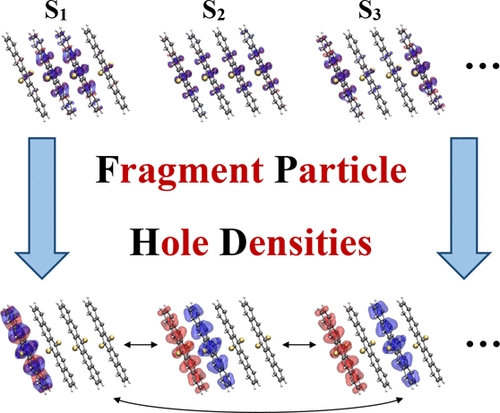当前位置:
X-MOL 学术
›
J. Phys. Chem. Lett.
›
论文详情
Our official English website, www.x-mol.net, welcomes your feedback! (Note: you will need to create a separate account there.)
Electronic Couplings for Photoinduced Charge Transfer and Excitation Energy Transfer Based on Fragment Particle–Hole Densities
The Journal of Physical Chemistry Letters ( IF 5.7 ) Pub Date : 2021-01-20 , DOI: 10.1021/acs.jpclett.0c03514 Yu-Chen Wang 1 , Shishi Feng 1 , WanZhen Liang 1 , Yi Zhao 1
The Journal of Physical Chemistry Letters ( IF 5.7 ) Pub Date : 2021-01-20 , DOI: 10.1021/acs.jpclett.0c03514 Yu-Chen Wang 1 , Shishi Feng 1 , WanZhen Liang 1 , Yi Zhao 1
Affiliation

|
A new scheme is proposed to calculate the electronic couplings for photoinduced charge transfer and excitation energy transfer for both singlet and triplet states. In this scheme, the locally excited and charge-transfer states are constructed from the adiabatic ones by maximally localizing the particle (i.e., electron) and hole densities in terms of predefined molecular fragments. The construction process, after which the electronic couplings are directly obtained, is highly efficient and can be combined with various kinds of preliminary electronic structure calculations as long as the adiabatic excitation energies and transition densities are available. The method also applies to the systems with multiple charge or excitation centers. Its validity is demonstrated by the applications to the 6,13-dichloropentacene dimer and tetramer and the C60-Zn porphyrin dyad. The results reveal that the environment has a strong impact on the electronic couplings and can even enlarge those for long-range charge transfer by several orders of magnitude.
中文翻译:

基于碎片粒子-孔密度的光耦合电荷转移和激发能转移的电子耦合
提出了一种新的方案来计算用于单重态和三重态的光致电荷转移和激发能转移的电子耦合。在该方案中,通过根据预定的分子片段最大程度地定位颗粒(即电子)和空穴密度,从绝热状态构建了局部激发态和电荷转移态。只要可获得绝热激发能和跃迁密度,可以直接获得电子耦合的构造过程非常高效,可以与各种初步的电子结构计算相结合。该方法也适用于具有多个电荷或激发中心的系统。通过在6,13-二氯并五苯二聚体和四聚体以及C上的应用证明了其有效性60-锌卟啉二元组。结果表明,环境对电子耦合有很大的影响,甚至可以将用于远程电荷转移的电子耦合扩大几个数量级。
更新日期:2021-01-28
中文翻译:

基于碎片粒子-孔密度的光耦合电荷转移和激发能转移的电子耦合
提出了一种新的方案来计算用于单重态和三重态的光致电荷转移和激发能转移的电子耦合。在该方案中,通过根据预定的分子片段最大程度地定位颗粒(即电子)和空穴密度,从绝热状态构建了局部激发态和电荷转移态。只要可获得绝热激发能和跃迁密度,可以直接获得电子耦合的构造过程非常高效,可以与各种初步的电子结构计算相结合。该方法也适用于具有多个电荷或激发中心的系统。通过在6,13-二氯并五苯二聚体和四聚体以及C上的应用证明了其有效性60-锌卟啉二元组。结果表明,环境对电子耦合有很大的影响,甚至可以将用于远程电荷转移的电子耦合扩大几个数量级。


























 京公网安备 11010802027423号
京公网安备 11010802027423号